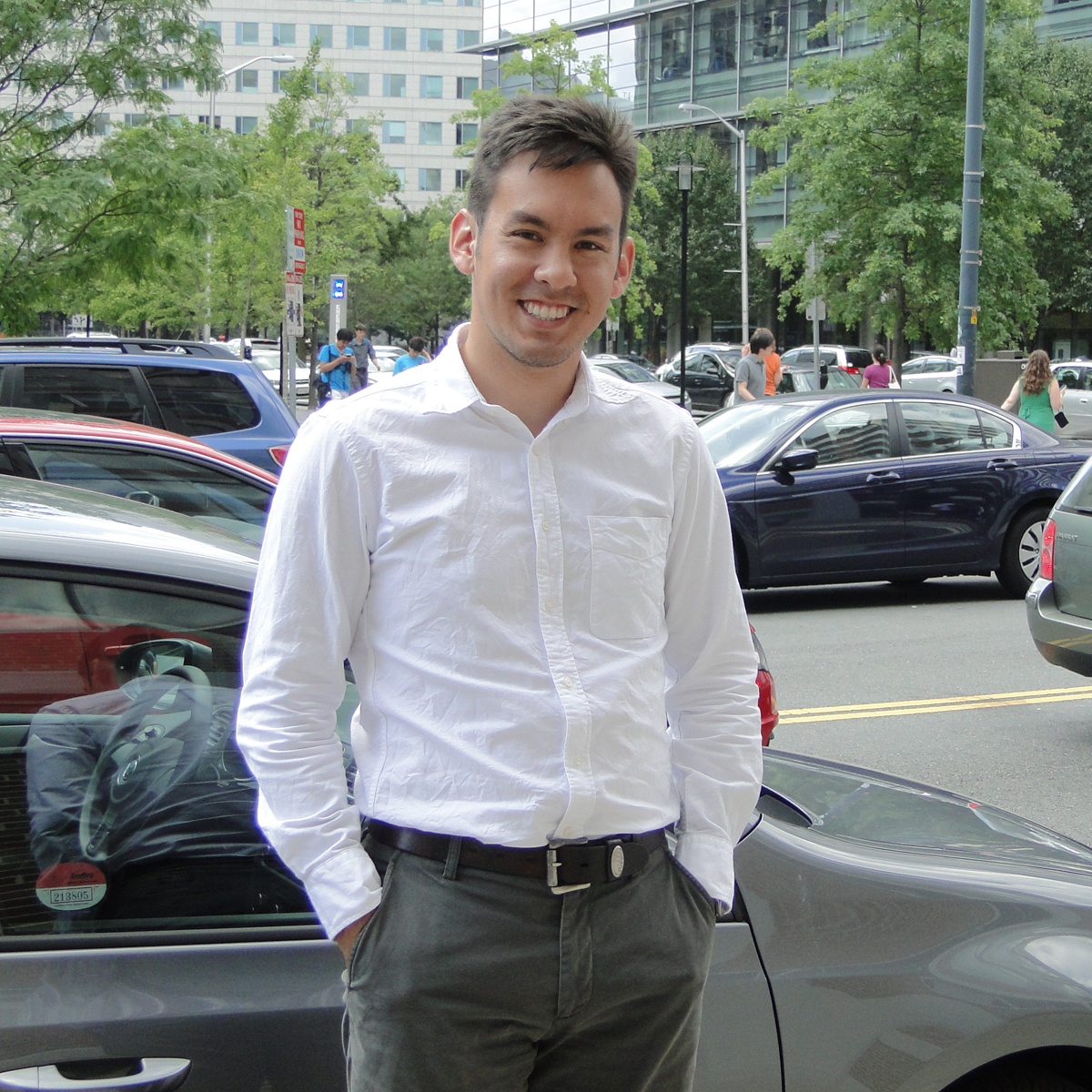
Paul Kishimoto is intrigued by the question: How will we sustain the ways we move? To answer that, he’s tackled an issue of great uncertainty and concern—specifically regarding China’s transportation future.
With the number of cars sold in China each year having already surpassed that in the U.S. or Europe, and that trend increasing rapidly, many are worried. This trend means more emissions that contribute to health problems and global climate change, and also making the Chinese vulnerable to oil price shocks like the U.S. experienced in the 1970’s.
The question in China is, when and how high will vehicle use peak? Because of the amount of uncertainty surrounding that question, Paul used methods similar to those behind the Joint Program’s Greenhouse Gamble wheels to test 400 possible outcomes and compare them to the past. The average outcome from these projections showed an increase in vehicle use from 50 to 600 cars for every thousand people by 2050—with some cases falling below 600 and some rising above.
Reviewing the work of others, Paul chose the highest vehicle use others have predicted, the lowest, and a medium result —with his likely uncertainty-based estimate agreeing with the highest vehicle use case (600 vehicles/1000 people). He then applied a policy measure to each of these scenarios to see what impact restricting emissions would have on future vehicle use. The high vehicle scenario dropped from 600 vehicles to just about 200 for every one thousand people. That’s compared to places like Europe where car ownership has peaked at 600, and the U.S. where ownership is at 800 for every thousand people.
While the policy scenario modeled is strong, and perhaps unrealistic, China will have some climate policy. The government has already committed to reducing emissions intensity 17 percent by 2015, and 40-50 percent in total between 2005 and 2020. But how programs in different provinces play into the targets of China’s central government brings in a new type of uncertainty.
“The average bureaucrat in China has a life that’s pretty similar to the average middle class urban citizen, so if they’re trying to get to work in the city and it’s congested, or very smoggy, or their gas prices are high—they’re bothered by that personally and that shows in the policies they pursue,” Paul says.
It’s this dynamic that has led Shanghai, the second largest city in China after Beijing, to cap the number of cars allowed in the city by auctioning a limited number of license plates each year. An average license plate is about $10,000, about the same as a small car—forcing people to pay twice as much just to get on the road. That strategy has worked, as Shanghai adds only about 100,000 new vehicles each year, as opposed to about 300,000 in Beijing.
While the policy is in direct opposition to the central government’s goal to grow the domestic auto industry, especially by subsidizing electric and hybrid vehicles, it’s unclear if other smaller—but growing—Chinese cities will adopt a similar approach.
Regardless of how things turn out on the policy front, China’s transportation growth over the next 50 years will not mirror that of the U.S. or Europe’s growth during the last 50 to 100 years.
“While China is going through things the Western world went through almost a hundred years ago—industrialization and increased motorization, urbanization and people getting wealthier—because of different options available technologically and different policy considerations they’re not going to take the exact same trajectories as the U.S. or Europe,” Paul says. “China has its own, unique transportation future.”
As for Paul’s future? Paul is currently pursuing a Ph.D. in MIT's Engineering Systems Division, and is continuing research with the China Energy and Climate Project.
“I still feel like I have a lot to learn from the people who are around me here,” Paul says, attributing that feeling partly to the general environment of the Joint Program. “We’re all in one pool doing very different things, but we’re all chipping away at the same problem…that helps you see how what you’re doing can have a big impact.”

